Posts Tagged Sattva
The Mythical Constant of the Universe – 137
Posted by Kim Graae Munch in Esoterics, Kabbalah, Science, The Three Logoi on January 29, 2022
The most mystical and mythical number in the universe, both within science and esotericism.
Esoterically it defines God and man as we are created in the picture of God. It shows God as one, as three in the Trinity or body, soul and spirit, and the seven Elohim or seven human spiritual bodies.
For physicists, it describes the universe. It’s called the fine-structure constant and is one of the key physical constants of the universe.
“This immutable number determines how stars burn, how chemistry happens, and even whether atoms exist at all,” as Michael Brooks explained in a New Scientist article.
If this value was changed just a little the universe would end in chaos that would not have been habitable, where life, as we know it, couldn’t have evolved.

From Wikipedia:
Since the early 1900s, physicists have postulated that the number could lie at the heart of a grand unified theory, relating theories of electromagnetism, quantum mechanics and, especially, gravity.
The fine-structure constant, a dimensionless physical constant, is approximately 1/137.
Lederman expounded on the significance of the number in his book The God Particle: If the Universe Is the Answer, What Is the Question?, noting that not only was it the inverse of the fine-structure constant, but was also related to the probability that an electron will emit or absorb a photon—i.e., Feynman’s conjecture.
He added that it also “contains the crux of electromagnetism (the electron), relativity (the velocity of light), and quantum theory (Planck’s constant).
It would be less unsettling if the relationship between all these important concepts turned out to be one or three or maybe a multiple of pi. But 137?
The number 137, according to Lederman, “shows up naked all over the place”, meaning that scientists on any planet in the universe using whatever units they have for charge or speed, and whatever their version of Planck’s constant may be, will all come up with 137, because it is a pure number.
Lederman recalled that Richard Feynman had even suggested that all physicists put a sign in their offices with the number 137 to remind them of just how much they do not know.
At the range of 10−15 m (1 femtometer), the strong force is approximately 137 times as strong as electromagnetism.
Feynman on 137
“Immediately you would like to know where this number for a coupling comes from: is it related to p or perhaps to the base of natural logarithms?
Nobody knows. It’s one of the greatest damn mysteries of physics: a magic number that comes to us with no understanding by man. You might say the “hand of God” wrote that number, and “we don’t know how He pushed his pencil”.
We know what kind of a dance to do experimentally to measure this number very accurately, but we don’t know what kind of dance to do on the computer to make this number come out, without putting it in secretly!” ~ R. P. Feynman, QED: The Strange Theory of Light and Matter
In Religion
The Bible says that Ishmael, Levi and Amram all lived to be 137 years old. The three appearances make it the most common lifespan of individuals in the Bible.
Kabbalah
The Hebrew word קבלה (Kabbalah) has a Gematria (numerical value) of 137.
Kabbalah is generally taken to mean “the received tradition”, which conveys the continuity of a tradition that has been passed down from generation to generation. Nevertheless, the earlier nuance of meaning is seen in the first appearances of its root in the Torah (Exodus 26:5 and 36:12), where it means “parallel” or “corresponding” rather than “receiving”.
It is used to describe the “corresponding loops”, which, when clasped together, enjoined the two sections of the Tabernacle’s ceiling. These loops were suspended directly over the veil that divided the Holy Place and the Holy of Holies.
Symbolically, this is the threshold between the physical dimension and the utterly spiritual dimension. In other words, at the boundary line of the physical world, the number 137 emerges. The wisdom of Kabbalah is to find correspondences between the mundane and spiritual levels of reality.

See https://en.wikipedia.org/wiki/137_(number)?wprov=sfti1
and https://science.howstuffworks.com/dictionary/physics-terms/why-is-137-most-magical-number.htm

The Three Logoi in the Theosophical tradition
Posted by Kim Graae Munch in Esoterics, Rosicrucianism, The Holy Grail, The Three Logoi on July 3, 2018
The Three Logoi as defined in Theosophy
This follows the definition of Helena Blavatsky as it’s described in blavatskytheosophy.com, a serious Theosophical site.

THE FIRST LOGOS is always referred to as the Unmanifested Logos. It is symbolised as the point in the centre of the circle, the circle representing the boundless infinite Absoluteness of Parabrahm and the point marking the very beginning – or rather the re-beginning – of differentiated existence after the Great Night of the Universe (Maha-Pralaya) in which there was nothing – “neither sound nor silence” – but the undifferentiated, unconditioned, infinite, absolute Parabrahm Itself.
The First, Unmanifested, Logos is also called the highest Logos. It is said that it is out of space and time and is “latent potentiality” only. The First Logos is the “potentiality” of the Universe, whilst the Second Logos is the “potency” of the Universe. The Second emanates from the First. Being only latent, potential, and unmanifested, the First Logos is very close to the Absolute and indeed is Its direct radiation. It is not really possible to say any more about it than this. But in the teachings of Theosophy we notice that Atman, the highest Principle of the human constitution, is sometimes spoken of as corresponding to the Unmanifested Logos, whilst most of the time it is equated with the Absolute. This is not a contradiction, as may appear on the surface, but is actually a clear indication of something.

THE SECOND LOGOS is the Manifested Logos. In and of itself it is actually only “the semi-manifested” for it manifests through and as the Third Logos. In “Transactions,” HPB speaks of it as “the Universal and Intelligent Soul, Divine Ideation, combining the ideal plans and prototypes of all things in the manifested objective as well as subjective world.”
Whilst the First Logos is described as “latent potentiality,” the Second is described as “differentiated consciousness.” We are told that space and time commences with the emanation of the Second Logos from the First Logos. The Unmanifested is the potentiality; the Manifested is the potency.
It is this Logos which is the Universal Mind, spoken of in Hinduism as Mahat, which literally means “The Great.” And as the Hindu allegories show, the Divine Mind produces “seven mind-born sons” which go on to play major and important roles throughout the Universe. The synthesis of these seven – which are actually seven rays, seven powers, or seven forces – is what Theosophy calls the Third Logos.
THE THIRD LOGOS is referred to variously as the Seven Rays, the Seven Creative Powers, or the Seven Logoi. The Second Logos contains in itself the Third Logos and manifests through and as this Third Logos, as was mentioned a moment ago. If we call the First Logos latent potentiality and the Second differentiated consciousness, we can refer to the Third as the ultimate differentiation of the Second, in the form of individualised cosmic forces. From them “will proceed the innumerable series of Hierarchies.”
These “Seven” are really the seven occult forces of the Universe and which result, amongst other things, in the actualisation and objective manifestation of that which lies latent, subjective, and archetypal within the Universal Mind. In other words, they see to the fulfillment of the Plan for the construction and building of the Universe.
…
“Many different names used in many different spiritual traditions may end up becoming confusing unless we keep in mind that they are almost always merely illustrative names applied to this same Logos. Just as it is Brahmā which comes forth as the Logos from the Absolute Brahman in the philosophy of the Upanishads, so it is Adam Kadmon (“Heavenly Man”) which comes forth as the Logos from Ein-Soph in the Kabbalah, and Avalokiteshvara which comes forth from Adi-Buddhi in the esotericism of Tibetan Buddhism. Some Hindus will speak of the Absolute and its Logos as Shiva and Shakti, while others will prefer to use the term Vishnu, Narayana, or Ishvara for the Logos. Others may speak of it as the Universal Kundalini or Mother of the Universe, while a true Christian Gnostic may be inclined to call it the Divine Sophia.
…
In Theosophy, the Unmanifested Logos is often referred to as Narayana. Narayana is another name for Vishnu in Hinduism and it can be translated as “the Spirit of Divine Ideation moving on the waters.” Do you remember in the opening of the Book of Genesis in the Bible where it talks about the “Spirit of God” moving over “the waters of the deep” before the world came into being? In the far older Hindu scriptures, we read that Narayana began to move over the infinite waters of abstract Space and that this was “the first flutter of manifestation” which resulted in the cyclic reappearance of the Universe after the Maha-Pralaya.
HPB sometimes spoke of the First Logos as Brahmā, however, and often applied the name Brahmā to the Second Logos also. So we would do well to follow her example in not attaching too much importance to names but focussing instead on the idea and concept which lies behind those names and terms.
The Seven Rays which are referred to as the Third Logos are the Seven Kumaras in Hinduism – which are the seven “mind-born Sons of Brahmā” or Sons of the Universal Mind – whilst in Buddhism they are the Seven Dhyani Buddhas, in Christianity the Seven Archangels, in Judaism the Seven Elohim, and the seven lower Sephiroth of the Kabbalah. All different names for one and the same “thing.” As the most ancient scripture known to man (the Rig Veda of Hinduism) says, “Truth is ONE, though the sages call it by many names.”
The main difference between Steiner and Blavatsky is that Steiner see these descriptions as describing actual beings and hierarchies where Blavatsky saw them as abstractions. Krishna is an example of the Second Logos, Shiva an example of the Third Logos and Brahma an example of the First Logos. Here it’s interesting to see that Brahma, First Logos, is both connected to the lowest world and the highest world, and that he really isn’t very active in the development of Earth. Krishna, who are the same as Vishnu, are the ‘I’ of the Earth, the center of the Seven Rays, the Heart Chakra of man, he is the main consciousness in the Earth development.
From The Causal Body and the Ego by Arthur E. Powell:
Taking first the manifestation of consciousness, the site of the universe having been marked out [see diagram II] :
1. the Logos Himself appears as a point within the sphere;
2. the Logos goes forth from that point in three directions to the circumference of that sphere or circle of matter;
3 the consciousness, of the Logos returns on Itself, manifesting at each point of contact with the circle one of the three fundamental aspects of consciousness, known as Will, Wisdom and Activity, as well as by other terms.
The joining of the three aspects, or phases of manifestation, at their outer points of contact with the circle, gives the basic triangle of contact with matter. This triangle, together with the three triangles formed by the lines traced by the point, yields the”divine tetractys”, sometimes called the Kosmic Quaternary.

 Diagram III
Diagram III
Taking now the changes set up in Universal matter, corresponding to the manifestations of consciousness, we have, in the sphere of primordial substance, the virgin matter of space [see Diagram III ] :
the Logos
1. appearing as a point irradiating the sphere of matter;
2. the point vibrating between centre and circumference, thus making the line which marks the drawing apart from spirit and matter;
3. the point, with the line revolving with it, vibrating at right angles to the former vibration, and forming the primordial Cross within the Circle.

The Cross is thus said to “proceed” from the Father [the point] and the Son [the diameter] and represents the third Logos, the creative mind,the Divine activity ready to manifest as Creator.
I have used a drawing of Steiner to show the Three Logoi in the hierarchies and in man. It’s an old diagram of European esoteric origin called the Alchemist Mountain. It’s a versatile diagram that can be used to show many aspects of man, the gods and the universe. They are the Seven Rays mentioned by Blavatsky.
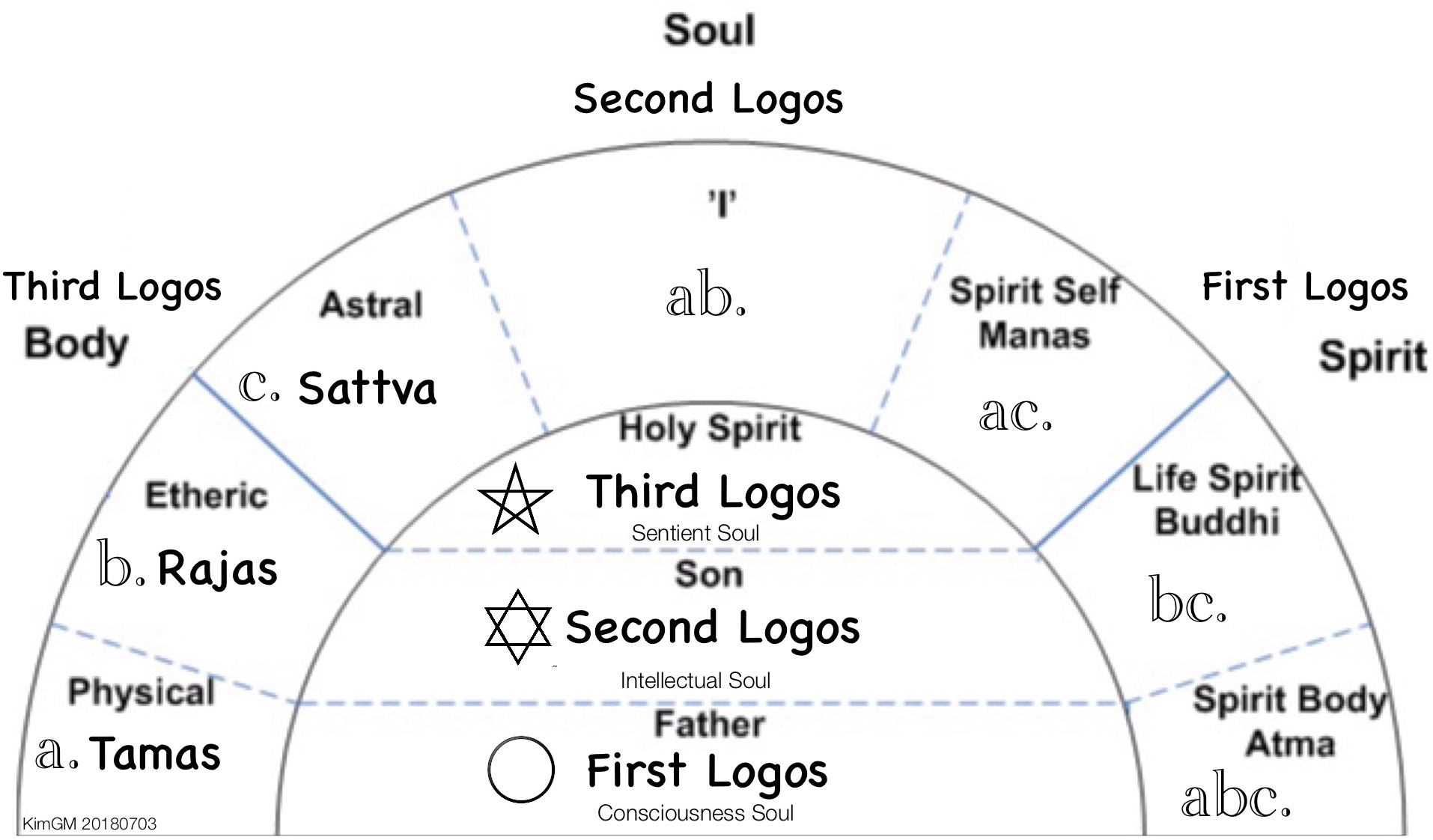
The Three Logoi as defined in Anthroposophy
This is a definition by Rudolf Steiner on the three creative principles in the universe, also called the Logoi’s:
Here we have three definitions of Beings who bring about, who underlie a planetary chain. They are called the three Logoi.
1. The Third Logos produces by means of combining.
2. When out of one substance something else having new life comes into being, this is brought forth by the Second Logos.
3. Everywhere, however, where we have to do with a coming forth out of nothing, we have the First Logos.
This is why the First Logos is also often called the One who is immanent in things, the Second Logos the One who in the quiescent substance in things creates life out of the living, the Third Logos the One who combines everything existing, who puts the world together out of things.
These three Logoi always manifest in the world in and through one another.
See much more on this here: The Logos Walks the Earth
Steiner uses these symbols for the Three Logoi. He uses a tripartition for the third Logos where Theosophy uses a cross or a four partitioning.

First Logos gives the idea, Second Logos gives life and Third Logos gives the resulting form.
The combinations of the three letters a, b and c comes from:
 I don’t know the author of the original drawing.
I don’t know the author of the original drawing.
Appendix on Fohat
The Second Logos is also called Fohat, here a page from the Secret Doctrine:

The Logos Walks the Earth
Posted by Kim Graae Munch in Esoterics, Hinduism, Indian esoteric, Kabbalah, Rosicrucianism, The Holy Grail on April 13, 2018
“The greatest untold story is the evolution of God.”
― G.I. Gurdjieff
I have here a text by Rudolf Steiner where he describe the three Logoi. I have added other quotes by Steiner and my own comments and diagrams.
The Three Logoi
There are three godly creative powers in the universe, the three Logoi: In Kabbalah they are called the Father, Mother and Son and in Christianity they are called Father, Son and Holy Spirit. It’s different terminology, but the underlying reality is the same.
The Father, Mother and Son symbology describes the creative type in relation to the creation and higher Logoi. The Mother is of course the Creator of humankind. The Father gives the idea, the Mother gives life and the Son gives form. The Trinity defines their role in the creation. See more on this aspect in Sophia – Creator of Humankind.
The First Logos creates out of nothing, creates Consciousness. The Second Logos creates new Life out of the existing and guides the living. The Third Logos combines the created, the building blocks, the clockwork of the microcosmos.
Rudolf Steiner has written this text on the three Logoi, but I must admit I didn’t understand the text before I had worked it out for myself. Its very short and he doesn’t give any details or examples, but I think it’s one of the deepest secrets he has hidden here for us to find. I think it’s about time it becomes known.
From Steiner’s Foundations of Esotericism, lecture 27:
Here we have three definitions of Beings who bring about, who underlie a planetary chain. They are called the three Logoi.
• The Third Logos produces by means of combining.
• When out of one substance something else having new life comes into being, this is brought forth by the Second Logos.
• Everywhere, however, where we have to do with a coming forth out of nothing, we have the First Logos.
This is why the First Logos is also often called the One who is immanent in things, the Second Logos the One who in the quiescent substance in things creates life out of the living, the Third Logos the One who combines everything existing, who puts the world together out of things.

These three Logoi always manifest in the world in and through one another.
…
In contemplating the world one continually sees the interaction of the three Logoi.
When a new creation starts, a new Æon, the First Logos sacrifices himself by falling down to a lower level. An archangel becomes an angel by adding an etheric body as a lower body.
The first logos is related to the second, as when, standing in front of the mirror image, we undertake to give our own life to the mirror image. The surrender of life is the original sacrifice in free action. That is the act of the first logo.
The second logos is exactly the same as the first logos, except that it was given its existence by a sacrifice. If one now studies the effect of the second logos, one finds that the essence of the second logos is that it radiates the essence of the first logos back to the first logos.
Thus, the second logos is a reflection of the first logos from which he received his own life, the life that emanated from the first logos.
The lecture series Foundations of Esotericism contains gold nuggets not found elsewhere. Not all versions of this text are good or contain all the pictures. This I think contains everything.
When Christ as First Logos sacrificed himself in the Saturn Æon when he took an astral body as the lowest body he became an archangel. On the old Sun he created Lucifer as a mirror image of himself, the Second Logos, and Lucifer became the first true being of the archangelic hierarchy.
The First Logos encircles the creation, the Second Logos enters the reality. It splits in two, a female part like Sophia or Eve and a masculine part like Anthropos or Adam, and like a potter the one hand forms the pot from outside and the other from within.
Now we have a binary in the Second Logos. The life and content of the Second Logos are twofold. The content is the same as the First Logos, but life is different than the First Logos.
The dash in the middle of the second circle means that in the Second Logos life and content are twofold, that they are divided. When it comes to content, image and mirror image are the same for both, but life is twofold. ~Steiner.
First, the First Logos is reflected once again, secondly, the reflection is reflected. This then gives the Third Logos as the reflection of the other two logoi. So it contains the Third logos:
• the mirror image of the First Logos
• the mirror image of what the First Logos in the Second Logos did, namely his life
• The mirror image of what the Second Logos reflects back to the First Logos.
Let us now imagine: The First Logos is mirrored in a. If the First Logos is the creative activity that strives outward, then its reflection in the Third Logos is just the reverse activity of the First Logos. In the First Logos, a is the highest spiritual world light: in the Third Logos, a is the ultimate spiritual darkness.
ln the Second Logos, b is the life that the Second Logos received from the First Logos. It is not the life that sacrifices itself, but the one that has been accepted. The life that sacrifices itself in the First Logos is love. The opposite of this in the Third Logos is the absolute desire, longing, striving for logos, b is therefore the absolute desire in the Third Logos.
In the Second Logos c is the mirror image of the First Logos, which reflects the Second Logos.
• What we have surrendered comes back as desire.
• The image itself, which we ourselves are.
b the absolute desire = Rajas
c the simple reflection of the first logo = sattva
Tamas, Rajas, Sattva are the three gunas, the three parts of the Third Logos. ~Steiner
First, a, b and c are present.
• If a alone exists, it is Tamas.
• When a – the spiritual darkness or Tamas – combines with b – rajas, the absolute desire – darkness combines with desire, and it is a striving for the first logos.
• When a and c – Tamas and Sattva – are combined, we have created the image of the first logo out of the darkness.
• Likewise, we can combine b with c. It can each occur individually and be combined with one of the others.
• All three combined are what the first logo itself is.
We have seven possible combinations of the three gunas:
So these are the seven different combinations of Gunas. Imagine these seven possible combinations as the next world-creative principle that can emerge from the three Gunas. These seven entities really exist. They are the so-called seven creative spirits before the Throne of God, according to the three Logoi the seven nearest creative powers:
Seven creative spirits, which Jacob Boehme calls the seven spring spirits in his aurora, spring from the third logos, for all three activities of the third logos can work together, or in pairs two or each: there are seven combinations that appear essential, and of which the one that encompasses all three activities is the third logo itself. Thus, the next level is reached world-creative beings. ~Steiner.
I have used a drawing of Steiner to show this information, the Alchemist Mountain. It’s a versatile diagram that can be used to show many aspects of man, gods and the universe. It corresponds to the seven lowest sephira in the Kabbalah Tree of Life. Here put together with the Seven Creative Spirits and the Æon’s:
These seven world-creative principles correspond to the seven planets but also to the Planetary development cycles, Æons, the incarnations our Earth goes through, but also the shorter development periods follow this sequence. See more later.
In the old Saturn æon the seed of the physical body and Atma was created. This is the Father. In the old Sun æon the seed of the etheric body and Buddhi was added. This is the Son. On the old Moon the seed of the astral body and Manas was added. This is the Holy Spirit.
The astral is the most flexible layer, most conscious, and therefore easier to transform. The etheric layers consciousness is not as flexible so it’s less easy to transform. And the physical layer is the least flexible and therefore most difficult to transform.
Atma need all three layers (abc) to develop before it can be developed, and the consciousness soul is the channel developed.
Development of the spiritual bodies:
ac • The Spirit Self or Manas is the result of the experiences of the physical body (a) transforming the karma of the astral (c).
bc • Life Spirit or Buddhi is our wisdom, the result of the transformation of our etheric body (b) our opinions by the speculative thinking of the astral body (c).
abc • Spirit Body or Atma is the result of the transformation of the physical (a) by the work of the Etheric (b) and the astral (c).

Through the work in the physical and the etheric we create the soul. Through the work in the physical and astral we create Manas, develop the higher I. Through the work in the Etheric and Astral we create Buddhi, wisdom. Through the work in a, b and c we create Atma, the resurrection body.

They are the foundation behind all creation. We know them most visibly through Osiris, Isis and Horus, but usually the Logoi are hidden under a veil of mystery.
In every creation a being is selected to become the coming Logos for that creation, being the archetype for the rest of the creation. Already from old Saturn was the creating Word of humanity selected and prepared for the role.
This creating downwards is shown in Kabbalah where the Sephirots, the Logoi, are created downward. When the creation develops and raises, the Logos follows its siblings up. The Logos is like a sun in the creation, in the hierarchy.

The Tree of Life
In Christianity the archangel names are titles for the Logos at a given hierarchy. Steiner compares the great archangels to the other members of the angelic hierarchy as the sun to a planet.
The Messenger of God, Archangel Gabriel, is the Logos of the Angels. The Face of God, Archangel Michael, is the Logos of the archangelic hierarchy. The archangelic hierarchy should not be confused with the great archangels.

The Gods walk the Earth
This describes the Logoi in the Earth development, and less the actual details, I have another text describing more detailed here: Esoteric Earth History.
The Three Logoi is known through many symbols, here we have a number of such:
Steiner mentions that Zarathustra is the Second Logos, one of the three main teachers of mankind. These high spiritual powers work on Earth:
High spiritual beings whom we call masters stream down to us.
We should realize that it’s mainly they who guide us and are near to us in meditation.
We should also know that they walk on earth incarnated in a physical body.
The Symbology and Meaning of AUM
Adam and Eve – Anthropos and Sophia
In Genesis we have Adam as the first creation by Sophia, the physical world. Eve is the second creation, in who Sophia emanates into. Adam is the First Logos and Eve is the Second Logos, and Cain is her masculine side entering the physical universe as Yaldabaoth where Eve takes care of the spiritual side.
Cain is the Son of God, the Second Logos, who are the archetype of humankind, who develop life on Earth from the smallest cells to the human body, and the spiritual bodies, walking the path just before we walk it.
Abel is the Son of Man, the Third Logos we know as Jesus, he is a reflection of Adam and Eve, the Second Logos.
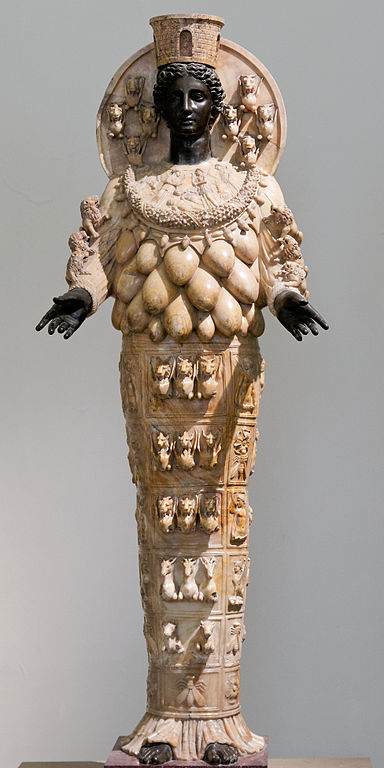
At the start of Earth Sophia was the etheric planet where all life was connected through tubes where prana feed all beings.
She took on the physical as outer body, that became more and more solid until she once became fully coated by physical materia.
The Second Logos developed all the physical life on Earth from one celled life until human life. The Second Logos was in form of the archetypal pair the only one incarnating around the end of Lemuria and the start of Atlantis.
The Earth and its life was fully covered in the physical stuff at the end of Dream Time, when Krishna died from mankind’s view, when the Dark Time, Kali Yuga, started. Sophia left the physical and raised to angel, Theosophia.
The First Logos was Zarathustra, Odin, Zeus, Noah, Elisha, and many more through whom Sophia worked.
Krishna teaches Arjuna, the Second Logos, to lead humanity on after the Dark Night, Kali Yuga, falls over the Earth. Krishna puts on paper the knowledge that people could see in the spiritual world, so it survived into the coming Dark Age. See Krishna and the Holy Spirit.
Arjuna learns that Krishna will not interact directly any longer in the human affairs, Krishna will in the future work through Arjuna. But even if Arjuna is one against all Krishna will make sure that he wins, through the wheel of fate, the Zodiac.

Krishna with the Wheel of Fate.
Christ Jesus
The First Logos is also known as the personality of Zarathustra, with the prime objective to develop the I, and preparing mankind to live in a purely physical world.
Jesus of Nazareth is a very highly developed individuality. In the thirtieth year of his life he gives up his own life to the descending Christ, the descending Logos. All this the Magi foresaw. The great sacrifice made by Jesus of Nazareth is that he gave up his ‘ I ’ to make way for the Second Logos. ~Steiner
With Jesus incarnated the Third Logos, the Son of Man, Abel, the one who stayed back. In the Son of Man is the creation descended a level deeper into the physical, by him the astral body is the fourth principle, where the I will be developed, where we had the I in the soul, in the intellectual soul, a purification of the etheric soul.
Steiner mentions that he as child he spoke a language only his mother spoke, who represents Sophia. It was dream language they spoke, the language spoken between the astral body and the higher I.
The following text also points to the Jesus being as the Holy Spirit, awaiting the time to incarnate:
The spirit that prevailed in the common origin of both souls and bodies is the father spirit; that is the “Father”.
The spirit that prevailed down below in the physical realm, whilst the spiritual went its separate ways up above, is the son spirit; that is the “Son”.
And the spirit that prevailed up above in the soul sphere until it was able to descend into the physical realm, that is the “Holy Spirit”.
From the notes of the lecture “The promised spirit of truth”, Cologne, 8 March 1907
The body of Jesus became one with the Earth, he didn’t leave the grave again, the Third Logos entered the earth.

When Christ left the Sun he left the highest member Atma behind so the highest body was the Buddhi, and attained the elemental body of type I as the lowest. He is the Archetype of the new humanity that will go through the human development on New Jupiter, also called New Jerusalem.
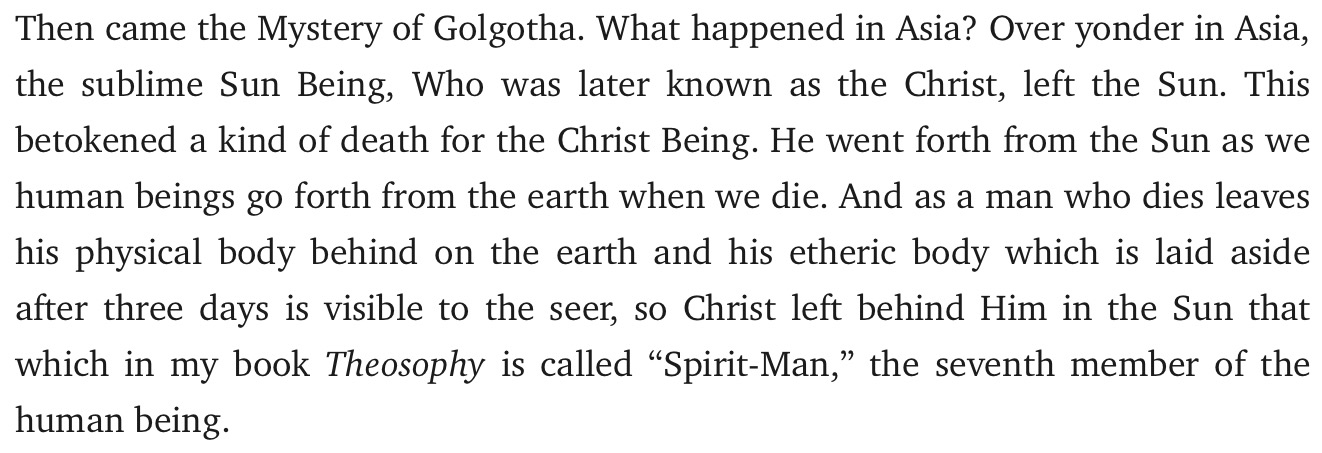
Here he receives the Buddhi:

And:

The soul of the First Logos entered Jesu Soul at thirteen and before the Baptism it leaves the soul again.
John the Baptist represented the old Adam Kadmon, he pointed on to the next. John was beheaded, separating body and head, splitting the upper and lower principles of the old Adam. After this he hovers above the disciples, as the spirit of the First Logos.
The incarnating Third Logos:

The Running Youth
When the running youth left Jesus, it was the First Logos who left. Jesus died and entered the death world, the astral world, as the Third Logos.
We see it again at the grave.
Zarathustra and Lazarus

The Zarathustra soul Steiner mentions is the First Logos and Lazarus the Second Logos:
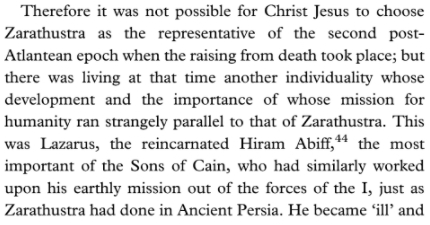
Here give Christ over to Lazarus John, the Second Logos, mentioning the relationship between Zarathustra and Lazarus.

The Second Logos is represented by John the Evangelist who leaves the cave, Earth, to become the teacher and leader of humankind, the Temple Builder, replacing the John the Baptist.

It’s interesting that the Second Logos, Lazarus, ascends from the grave and the Third Logos disappears into the grave, becomes one with the Earth.
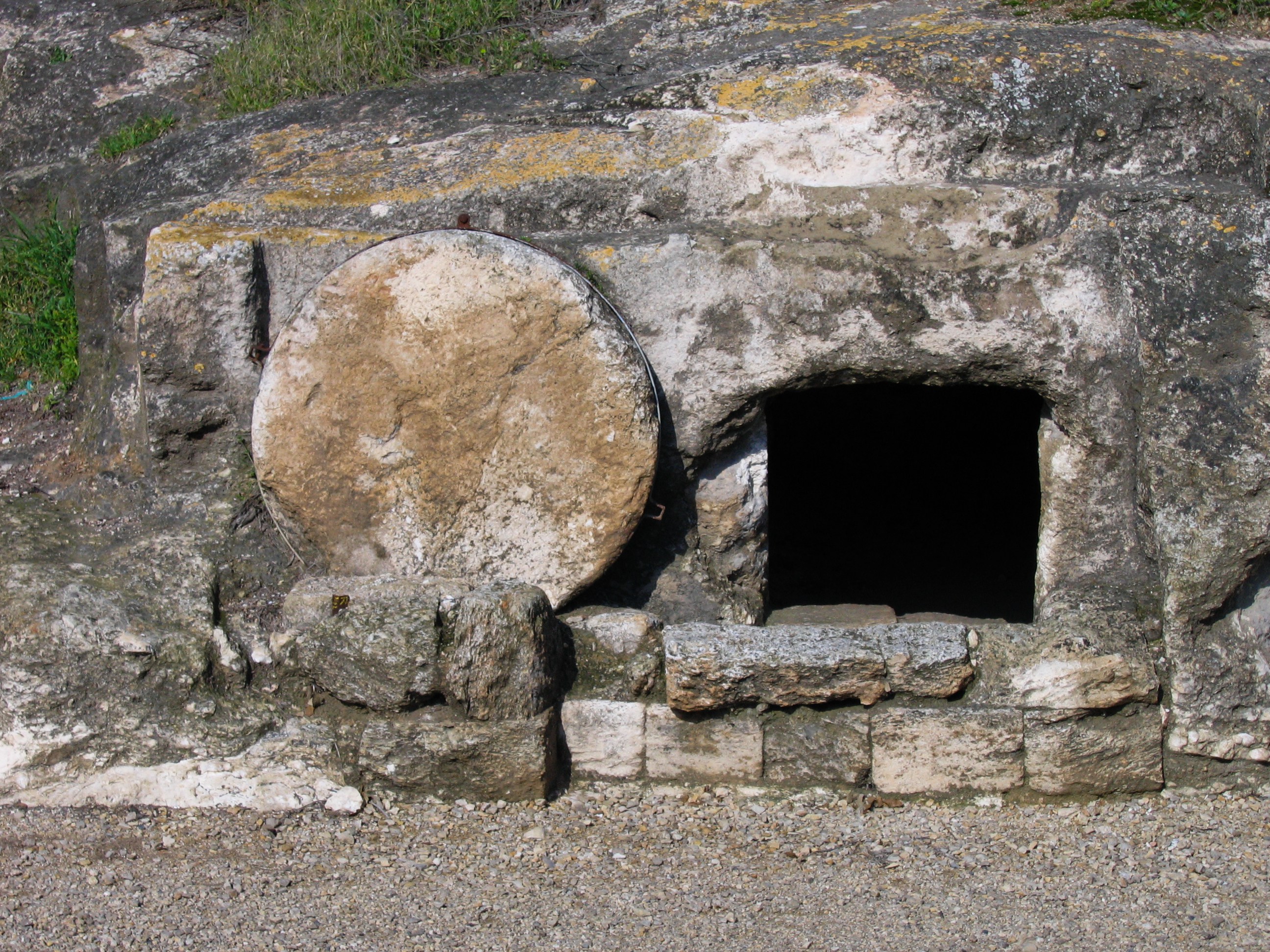
The Second Logos takes over, and he becomes the author of the Gospel of John and the Apocalypse of John:
“Under the Cross stood the mother of Jesus, Sophia.”
To this mother Jesus says:
“Woman, behold thy son.”
He himself had transferred the Sophia that lived within him to the Disciple John; he transformed him into a son of Sophia and said:
“Henceforth you should recognise the divine wisdom as
your mother and dedicate yourself to her alone.”
John had recorded this divine wisdom; Sophia is embodied in the Gospel of St. John.
Jesus had given him this wisdom, and he was authorized by Christ to transmit it to the world. ~Steiner
In 1879 Anthroposophia raised from Angel to Archangel, and as she was the Logos of the Angels, the Second Logos, she took the vacant seat of Michael.
A deeper view on the creative process of the Three Logoi can be found in Why are there so much pain on Earth?.

The Three Logoi

The history of the current Second Logos is a very long and interesting story, and I am working on it.

Creation of the Sun System and the Zodiac
Posted by Kim Graae Munch in Astrology, Esoterics, Indian esoteric on January 25, 2012
The World Egg is the most universal symbol we have, and the Zodiac is the most developed form of it, but we find it everywhere in all cultures, we just don’t recognize it as representing the world egg.
See also this album: The World Egg and the Zodiac
We can find the history of the zodiac in the four heavenly beasts, Eagle, Lion, Ox and Man; they were the first members of the Zodiac, first later came the Cardinal signs, and later again the mutable, they came when man began developing these qualities, just as the outher planets first became visible when they became influential.
Amma created the egg, what became our sun system, not the whole universe. Within his egg, Amma began spinning around, forming the po seed. The po is the smallest invisible seed at the center.

Amma then placed seven ‘words’ [Planets] in the po, which began to vibrate strongly within the seed. The spiraling vibrations caused four clavicles to grow forth from the po.

These were the four heavenly beasts, the fixed star signs. These four powers were the main factors in developing the sentient soul, Eros of Plato, or Tamas of Hinduism.
These four Androgyne beings split into four male and four female, so we now had the cardinal and fixed star signs. The cardinal powers were necessary for developing the intellectual soul, or Logos of Plato, or Rajas of Hinduism.
The Dogon call these beings the Nommo Anagonno, ‘The Word (Nommo) that Became Fish-Man’ (Anagonno). The male and females got a son, and the mutable star signs was created. The mutable signs were necessary for developing the conscious soul, Thumos of Plato, or Sattva of Hinduism.
The Nommo entered the world through the place on the sky where Sirius is placed. They were the teachers of mankind, the Angels. They are also associated with the moon.
This Zodiac are fields going from the circumference around the sun system into the system, not just radiation, and not from the large universe, this is called the Tropical Zodiac.
 Tropical Zodiac
Tropical Zodiac
The Egg, the Zodiac are spiraling through the universe so it’s changing position in relation to the stars, but the fields are constant in relation to the Sun system, to the vernal equinox:
 Sun-system passing through the universe
Sun-system passing through the universe
It can also be seen in this fashion:
 Sun system through the universe
Sun system through the universe
Man is created in the likeness of God, here in embryonic form, folding itself out from the circular form:
 Man Embryonic form
Man Embryonic form
We are not a copy of the whole universe, we are a copy of our own sun system, not including far sun systems.

Auric form of man:
 The Auric Egg
The Auric Egg
Lucifer gives visions. One has to break through them, otherwise one doesn’t break through the shell that’s around every man and covers the real spiritual world. Visions and voices are around us like the shell around a chick. One might see an angel in a vision and when one presses through the vision the angel will change into a snake, Lucifer’s symbol, for at the Temptation he appeared as a snake. Or one might see the colour blue in one’s meditation — if one breaks through it the blue can become red, and then it turns out that we saw our own passions. As a result of his temptation by Lucifer man doesn’t have everything that the Gods have; he received knowledge, but not life. Thereby everything that we know and perceive is permeated by Lucifer and Ahriman. … An ordinary man is like the chick that would consider its shell to be the real world. If the chick could see, it would see the egg’s contents as if it were the whole world. Likewise we see our eggshell or aura spread out around us as the blue dome of the heavens. If we break through our shell the sun and moon become darkened, the stars fall down onto the earth and the spiritual world spreads out in its place.
A man lives in his eggshell — his aura. The Elohim gave us our aura, and through the fall into sin it has become like a shell around us, and we’re in it like a chick in an egg. The stars in the heavens are our boundary and we must break through it with our soul force, just as a chick must break out of its shell through its own power. Then we get into a new world, just as a chick has a new world before it when it has crept out of the egg. And since men all have the same eggshell around them an astronomy could arise that lets the heavenly bodies move along the celestial dome. The egg shell is the Ex Deo nascimur. To break through it and to bring something with us into the spiritual world we must bring what penetrates the shell from the outer spiritual world and that’s common to all; and that’s the Christ. That’s why we say: In Christo morimur and hope that when we’ve broken through the shell we will be awakened again: Per Spiritum Sanctum reviviscimus. Esoteric Lessons Part III
Formed as the world egg:
 Mithras
Mithras
Wael Al-Mahdi have made an analysis of the fight between Mittras and the bull, which have it’s like in the Gilgamesh epic. Today we have our mental focus in the Ego, the Intellectual soul or left brain hemisphere, but then our mental focus was in what we today call our subconsciousness, the Sentient soul or Limbic brain. This fight describes the change of focus from the sentient soul to our current ego, but it’s an ongoing fight between our ego and the subconsciousness, or rather it’s a fight between our superconsciousness and subconscioussness and the battleground is the ego. Wael Al-Mahdi writes that Mithras is the devine ego, but I see him as the ego, the lower I, where I see his father, the mighty Sol Invictus, as the higher I.
Let us now take a look at the symbolism of the Mithraic mysteries and try to make some sense of them. Mithras himself, in the manner of all epoch-making developments of the unconscious, appears suddenly and unexpectedly, from a rock. Here Mithras takes on the role of the divine ego – the ego of the average man transfigured and lifted up by energy from the unconscious harnessed through myth and ritual. In this Mithras is strong, solid, rocklike. The divine ego and the everyday ego (the one that worries about food, shelter, money etc) are not identical; the divine ego, despite its disctinctness but in keeping with unconscious manifestations, is foreign, in this instance, of exotic Persian origin. To symbolize freedom from the unconscious as enemy, and also the actual emancipation of freedman Mithraists, Mithras dons a Phrygian cap, the so-called liberty cap. With the rise of Mithras, miracles are performed, as he strikes a solid rock with the thunder of consciousness and live-giving water spouts from the rock. Here the dead and inanimate can produce life, just as a psychological impasse can give rise to a new lease on life; the Qur’an states of God, “He brings the living out of the dead, and the dead of the living.”
The central and most striking image of Mithraism is the tauroctony – the slaying of the bull. This supreme act of defiance, even hybris, is depicted on subterranean murals in Mithraea from Britain to Rome to Syria. The bull in his power and animal intransigence is the unconscious as enemy. He is the personification, or rather theriomorphization, of all the alien powers that ailed the forward looking man of action. He is the heaviness of the heart at dawn, he is the tightness of the chest before a dangerous act. He gives rise to the autonomous moods of self-doubt and self-loathing. He is boredom, lack of meaning, existential ennui. He represents every social disappointment, lack of control, failure to follow custom, and most dangerously, lack of adaptation. The evil father, father as a depressant, is in the bull – as is the evil friend, the devil, who both attacks the ego and forces to do evil. Every worthless feeling of the ego is projected onto him – and he is indeed a fitting target of projection. In short, he is the great No to life. He is the enemy within that must be vanquished if the conscious ego is to grow.
In contrast to conciliation myths, in which the ego tries to make peace with the unconscious, here the ego strikes with its readiest weapon – its will. After a long chase and a difficult haul to the womb-cave where a transformation can occur, Mithras’ right hand performs the unspeakable act of stabbing the bull’s neck. The cave serves a dual purpose are both regenerative womb and the unconscious cosmos which parallels the real cosmos. But there is respect in Mithras – out of respect, he pulls the animal back by the nostrils, never by the horn. Mithras’ face is serene, almost sublime – divinely devoid of emotion, Zen in his imperturbability – looking up towards his father, the mighty Sol Invictus, the Invincible Sun, as if saying, “Behold my most brazen act, father. Soon we are to become equals” Mithras is steadfast, unflinching – he takes full responsibility for his act, he never hesitates or backs down. As a result of Mithras’ challenging of the evil-animal father archetype, Father Sun emerges in a more human guise but with his divinity still intact.
In some reliefs the sacred bull bleeds wheat or grapes, symbolizing the paradox of the ability of the unconscious, even at is most evil, to heal after it harms. The killing of the bull is not a real-world death but an unconscious event that breathes life into a new psychological energy and outlook. But Mithras, this self-overcoming hero, is not alone in his daring act. Like all good heroes he has his sidekicks, the torchbearers, Cautes with his torch pointing up and Cautopates with his torch pointing down. They are his awareness of opposites, his ability to make distinctions, to discern opposites, and in their astral aspect symbolize his heavenly outlook. There is his dog too, lapping up the bull’s blood – his discipline, self-control, honed intellect, and the vital ability of self-obedience. On the scene is a serpent of wisdom and shrewdness, also drinking the life giving blood, for no quantum is wasted here. A sneaky scorpion sucks the ‘vim’ out of the bull’s genitals, literally ‘breaking his balls’ – energy that can be better utilized by the conscious hero Mithras. Mithraism and the Unconscious as Enemy
More on the Tropical vs. Sidereal Zodiac(Bruce Scofield):
We all know that this astrological system (Vedic) uses one or another version of the sidereal zodiac, the slight differences between them being measured by what is called the ayanamsha, the gap between the tropical and sidereal zodiac.
The twelve sidereal-based zodiacal signs (rasis) used in this system are not particularly important overall, and they serve more as a background reference plane for planets than as a matrix for personality distinctions.
The houses are important, however, but house boundaries between planets will remain roughly constant in a timed birth chart no matter which zodiac is employed. After reading a number of texts on the subject it became apparent to me that Hindu astrology was a tradition that was not concerned with extracting psychological insights from birth charts, it was more event-oriented.
and
In my opinion, Rudhyar remains the most important astrologer of the 20th century. He had something intelligent to say on just about every issue in astrology, including the sidereal-tropical problem.
Rudhyar wrote that the sidereal zodiac, the zodiac of constellations, was a product of the myth-making faculty of the human psyche. These constellations, groupings of stars, are a remnant of an earlier age that saw the rise of agriculture, but they are not relevant to modern life.
He felt it was unfortunate that both zodiacs use the same names for their 12-fold division of the yearly circle, and he regarded the tropical zodiac as being the proper framework on which to assess the evolution of mankind.
 Tropical Zodiac
Tropical Zodiac
Or
 The Sun orbiting the Earth equator defining signs of the Zodiac.
The Sun orbiting the Earth equator defining signs of the Zodiac.
Distance to the Stars of the Signs
The star signs are purely symbolic, giving name to the star signs because they were at the particular part of the zodiac when the twelve 30° degrees parts of the ecliptic was named.
The stars in the signs are nowhere near each other, they may even not exist anymore, they are placed long from each other in the far past of the universe.
History of Tropical Zodiac
The classical zodiac was introduced in the neo-Babylonian period (ca. 7th to 6th century BC). At the time, the precession of the equinoxes had not been discovered. Classical Hellenistic astrology consequently developed without consideration of the effects of precession.
The discovery of the precession of the equinoxes is attributed to Hipparchus, a Greek astronomer active in the later Hellenistic period (ca. 130 BCE).
Ptolemy, writing some 250 years after Hipparchus, was thus aware of the effects of precession. He opted for a definition of the zodiac based on the point of vernal equinox, i.e. the tropical system.
While Ptolemy noted that Ophiuchus is in contact with the ecliptic, he was aware that the twelve signs were just conventional names for 30 degrees segments (especially since the Aries sign had ceased to be in contact with the Aries constellation already in his time). Wikipedia
He connected the thirty degree segments to the time of year, with the traditional names given.
 Ophiuchus or Scorpio by Christian Borup
Ophiuchus or Scorpio by Christian Borup
The Zodiac with the old rulers:
It is as a round table with twelve seats, with the King and Queen sitting together as Leo and Cancer for Sun and Moon, with the ten other seats taken by the knights. From The Sons of Jacob and the Zodiac.
Comments
Po Tolo (Sirius B) the oldest of stars, it’s name means ‘deep beginning’. The Dogon consider Po Tolo the reservoir and source of all things in this realm, and the germ of creation for our Solar System. It ejected it’s essence out into creation, and the particles of it’s essence was ‘infinitely small’.
References
Reconciliation of the Tropical and Sidereal Zodiacs. Part III.



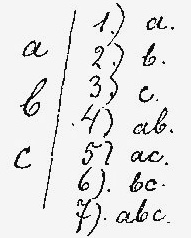










 Kamalas Garden
Kamalas Garden The Orphic Egg
The Orphic Egg




 Chthonian Snake Goddess
Chthonian Snake Goddess Cihuacoatl – Snake Woman
Cihuacoatl – Snake Woman Nāga kanya – Hindu Snake Woman
Nāga kanya – Hindu Snake Woman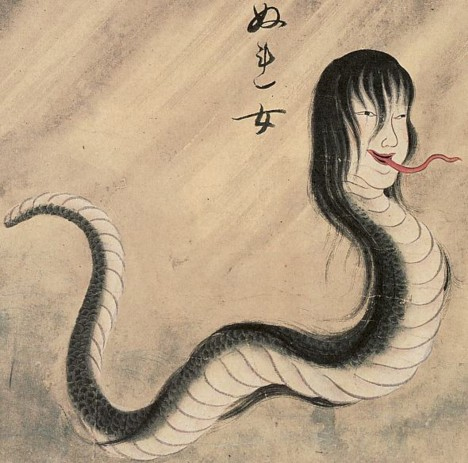
 Aida Wedo – Haiti
Aida Wedo – Haiti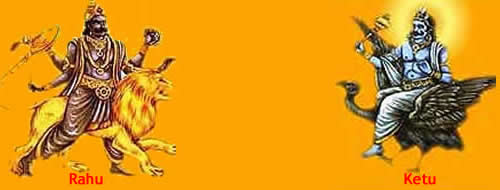 Rahu and Ketu
Rahu and Ketu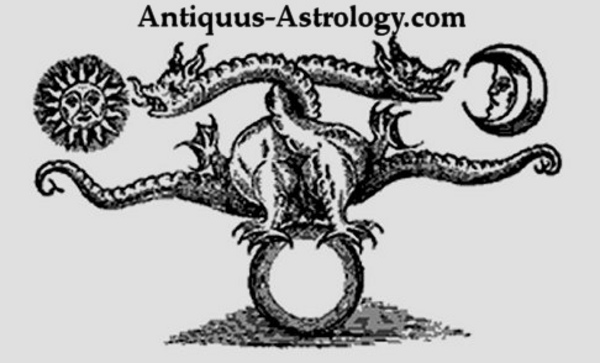 Rahu and Ketu
Rahu and Ketu The serpents has two different colors like the two outer pillars in the Kabbalah Tree of Life, and they have the same interpretations as the Feminine and Masculine energies. Seven Lotus Flowers or Chakras, which are spiritual organs, are placed on the spine.
The serpents has two different colors like the two outer pillars in the Kabbalah Tree of Life, and they have the same interpretations as the Feminine and Masculine energies. Seven Lotus Flowers or Chakras, which are spiritual organs, are placed on the spine. Chakras in the Tree of Life
Chakras in the Tree of Life
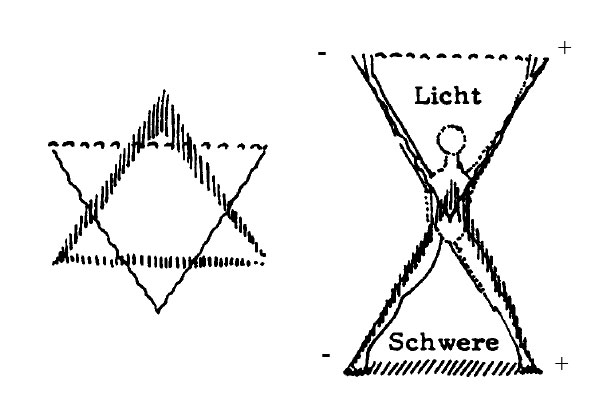 Microcosmic Man
Microcosmic Man




 Ketu and Rahu
Ketu and Rahu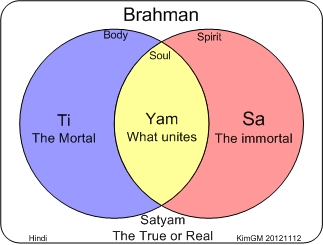
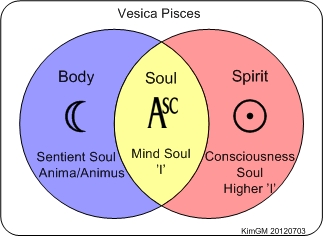



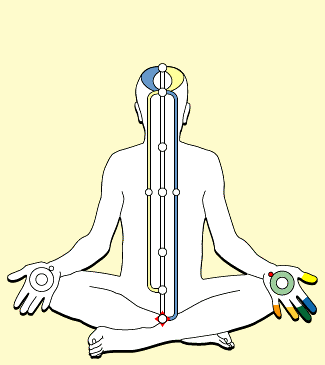


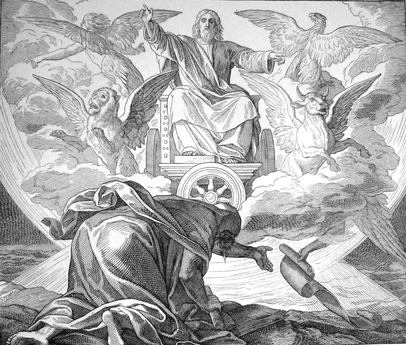

 Dambala and Aida Wedo – Tahiti
Dambala and Aida Wedo – Tahiti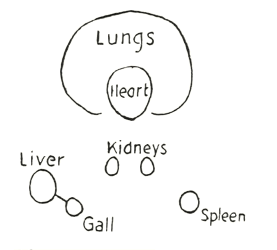
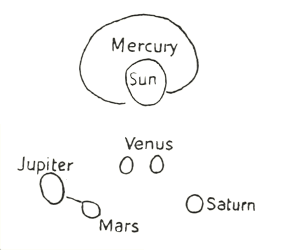
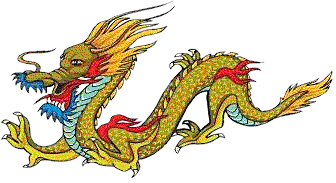
![kimgraaemunch [] GMail () com](https://kimgraaemunch.files.wordpress.com/2017/02/kimgraaemunch-g.png?w=210)












